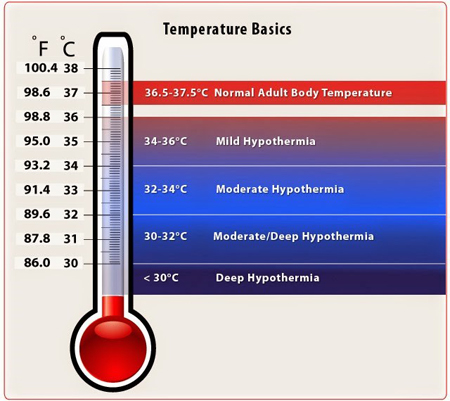|
|
||||
Cold Stress And How To Prevent ItAt this time of year in Pennsylvania, state workers commuting to and from the Capitol can be exposed to extreme winter temperatures. Cold temperatures and increased wind speed amplify the risk of cold stress to workers. Our January Spotlight will help you learn more about cold stress and how to prevent it from happening. Luke Forney,
What is cold stress and how is it caused? Cold stress occurs by driving down the skin temperature and eventually the internal body temperature. When the body is unable to warm itself, serious cold-related injuries can occur, along with permanent tissue damage or death may result. Near freezing temperatures are factors for cold stress, along with increased wind speed, which causes heat to leave the body rapidly (wind chill effect). Sweating also causes heat loss from the body. How can cold stress be prevented?
Types of Cold Stress Frostbite Frostbite is the freezing of skin and tissues. Frostbite can cause permanent damage to the body, and can lead to amputation. The risk of frostbite is increased in people who have poor blood circulation and those who are not dressed properly for extreme cold temperatures.
Hypothermia Hypothermia occurs when the normal body temp (98.6° F) drops to less than 95° F. Exposure to cold temps causes the body to lose heat faster than it can be produced. Prolonged exposure to cold will eventually use up the bodyís stored energy. Hypothermia is caused by very cold temperatures, but it can also occur at cool temperatures (above 40° F) if you become chilled from rain, sweat, or cold water immersion.
Here are links to more information https://www.cdc.gov/niosh/topics/coldstress/ http://www.mayoclinic.org/diseases-conditions/frostbite/basics/symptoms/CON-20034608 http://www.mayoclinic.org/diseases-conditions/hypothermia/basics/definition/con-20020453 |
||||
|
|
||||



 The Monthly Security Spotlight is published by Senate Security through the approval of the Secretary of the Senate, Megan
Martin. You may contact Senate Security at 787-6613 or email us at jferrante@os.pasen.gov if you have questions, concerns, or ideas that you may wish to see covered in future volumes.
The Monthly Security Spotlight is published by Senate Security through the approval of the Secretary of the Senate, Megan
Martin. You may contact Senate Security at 787-6613 or email us at jferrante@os.pasen.gov if you have questions, concerns, or ideas that you may wish to see covered in future volumes.